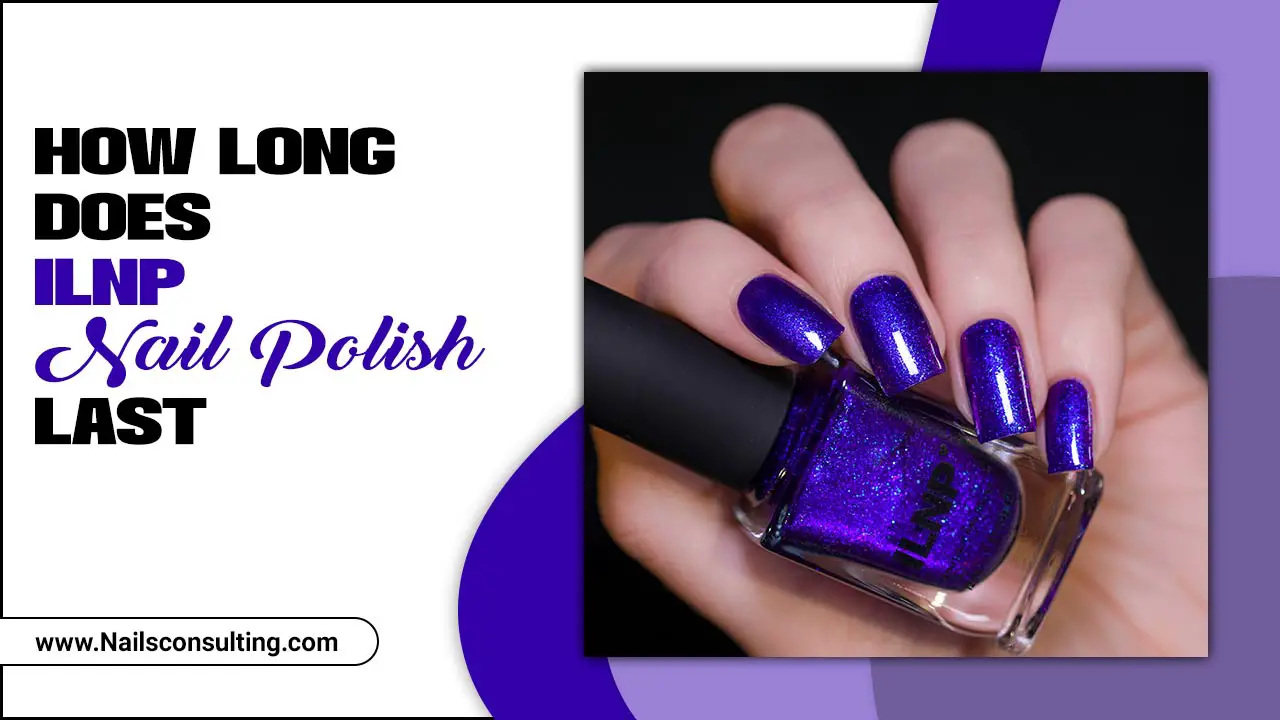Mastering medium nail designs with French tips is achievable for everyone! Get a chic, timeless look with our simple, step-by-step guide, from prep to polished perfection.
Medium-length nails are a sweet spot for style. They offer enough canvas for creativity without being too hard to manage. And when you add those classic French tips? Pure elegance! Many people find achieving that crisp, clean line a bit tricky, leading to uneven tips or a messy look. Don’t let that stop you from rocking this iconic manicure. We’re here to break it down, making it super easy, step-by-step. Get ready to create stunning French tips on your medium nails that look professionally done!
Why Medium Nails and French Tips Are a Match Made in Heaven
There’s a reason the French manicure has stayed popular for so long. It’s timeless, versatile, and incredibly chic. When combined with medium-length nails, it’s a match made in heaven for several reasons:
The Perfect Canvas
Medium nails offer just the right amount of surface area. They’re long enough to showcase the delicate white tip and the natural pink or nude base without looking too dramatic or becoming impractical for daily life. This length is often seen as the most universally flattering and manageable.
Timeless Elegance
French tips inherently exude sophistication. The clean lines and subtle contrast create a polished appearance that complements any outfit or occasion. It’s a look that transitions effortlessly from a casual day out to a formal event.
Versatility and Customization
While the classic white-tip French is iconic, medium nails are a fantastic base for variations. You can play with different base colors, tip colors, or even add subtle embellishments. Think colored French tips, glitter accents, or even a reverse French manicure.
Manageability and Durability
Medium nails are generally less prone to breaking than very long nails, making them more practical. The French tip design itself can also be forgiving. As your nails grow, the tip line might shift, but it’s often less noticeable than with very short or very long styles, meaning your manicure can look good for longer.
Essential Tools for Your Medium Nail French Tip Manicure
Before we dive into the steps, let’s gather your supplies. Having the right tools makes all the difference in achieving a salon-quality finish at home.
Nail Prep Essentials
- Nail File: For shaping your nails to that perfect medium length and soft edge. A fine-grit file (around 240 grit) is gentle yet effective.
- Nail Buffer: To smooth out any ridges and create a shiny surface before applying polish.
- Cuticle Pusher/Orange Stick: To gently push back your cuticles for a clean nail bed.
- Nail Clippers (if needed): To trim nails down to your desired medium length before filing.
- Cuticle Remover (optional): Helps soften cuticles for easier pushing.
- Lint-Free Wipes: Crucial for removing dust and oil without leaving fibers behind.
- Nail Polish Remover: To clean your nails and remove any old polish.
French Tip Application Tools
- Base Coat: To protect your natural nails and help polish adhere better.
- Nude or Sheer Pink Polish: Your base color for the nail.
- White Polish: For the iconic French tip. Opt for a good quality, opaque white for the best coverage.
- French Tip Guides or Stickers (optional but recommended for beginners): These adhesive strips help you create a clean line.
- Thin Nail Art Brush or Liner Brush: For freehanding the tips or cleaning up any mistakes.
- Top Coat: To seal your design, add shine, and protect your manicure from chipping.
- Quick-Dry Drops or Spray (optional): To speed up the drying process.
Step-by-Step Guide: Achieving Perfect Medium French Tips
Ready to get started? Follow these simple steps for salon-worthy medium nail French tips.
Step 1: Prep Your Nails
This is the foundation for a long-lasting and beautiful manicure. Start by removing any old polish with nail polish remover and lint-free wipes.
- Shape Your Nails: Decide on your preferred medium nail shape – squoval, rounded, or soft almond are excellent choices for French tips. Gently file your nails to your desired length and shape. Always file in one direction to avoid weakening the nail.
- Cuticle Care: Apply a drop of cuticle remover to each nail, if using. Gently push back your cuticles with a cuticle pusher or orange stick. Be careful not to push too hard or damage the nail bed. Trim any hangnails if necessary.
- Buff and Clean: Lightly buff the surface of your nails to smooth any ridges and create a good surface for polish adhesion. Wipe away all dust with a lint-free wipe. Ensure your nails are completely dry and free of oils.
Step 2: Apply Base Coat
A good base coat is your best friend! It prevents staining from colored polishes and helps your manicure last longer.
Apply one thin, even coat of your clear base coat to each nail. Let it dry completely – this usually takes about 60 seconds.
Step 3: Apply Your Base Color
This is the main color of your nail. For a classic French, a sheer pink, milky white, or nude polish works beautifully.
- Apply your chosen base color. Two thin coats are usually better than one thick coat.
- Ensure each coat is completely dry before applying the next. This prevents smudging when you add the tips.
Step 4: Creating the French Tip
This is where the magic happens! You have a few options here, depending on your comfort level.
Option A: Using French Tip Guides (Recommended for Beginners)
- Apply the Guide: Once your base color is dry, carefully apply a French tip guide sticker to the edge of your nail. Position it where you want the white tip to start, creating a curve. Press down firmly to ensure a good seal so polish doesn’t seep underneath.
- Apply White Polish: Dip your white polish brush into the bottle and wipe off excess polish on the rim. Apply the white polish carefully over the exposed tip of your nail, up to the edge of the guide. You may need one or two coats for opacity. Allow the white polish to dry completely until it’s no longer tacky to the touch – this is crucial!
- Remove the Guide: Gently peel off the French tip guide while the white polish is still slightly pliable but mostly set. Pulling it off too early can smudge the tip, and waiting too long can cause it to stick or peel the polish.
Option B: Freehanding the Tips with a Brush
This method takes a bit more practice but offers great control.
- Use a Liner Brush: For this technique, it’s best to use a separate thin nail art brush or a liner brush. Dip your brush into the white polish, wiping off the excess.
- Create the Smile Line: Start by drawing a small dot in the center of your nail’s free edge. Then, draw a line from that dot down towards one side of the nail, creating half of your smile line. Repeat on the other side, connecting to the first line. Aim for small, controlled strokes.
- Fill and Refine: Once you have your outline, fill in the tip. Use the brush to clean up any wobbly lines or imperfections. You can also use a brush dipped in nail polish remover (but not soaking wet) to sharpen the edge if needed.
Option C: Using a Silicone Stamper or Nail Art Pen
Sometimes, a specialized tool makes it easier. Silicone stampers designed for French tips can be a fun alternative, allowing you to “stamp” the white tip onto the nail. Nail art pens with fine tips offer precision similar to a liner brush but can be easier to control for some.
Step 5: Apply Top Coat
This is the final, crucial step to seal your design, add shine, and prevent chipping.
- Apply one generous, smooth coat of your favorite top coat over the entire nail, including the tips. Make sure to cap the free edge of your nail by running the brush along the very tip. This helps prevent chipping.
- If you’re using quick-dry drops or spray, apply them now according to product instructions once the top coat is applied.
- Allow your manicure to dry completely. This can take anywhere from 5 to 15 minutes for nails to be truly hard, even with quick-dry products. Avoid touching anything until then!
Tips for Achieving Flawless Medium French Tips
Even with the best guides, a few extra tricks can elevate your French manicure from good to absolutely stunning.
The Importance of Patience
This is the golden rule of DIY manicures, especially for French tips. Don’t rush the drying times between coats. A slightly tacky nail is an invitation for smudges and mistakes. For more on nail drying, check out this guide from MedlinePlus which touches on nail health and care, underscoring why proper drying is essential.
Clean Your Brush
If you’re freehanding or cleaning up edges, keep a brush dipped in nail polish remover handy. Wipe it clean with a lint-free wipe and re-dip as needed. A brush that’s too wet with remover can thin out your polish too much.
Practice Makes Perfect
Your first attempt might not be flawless, and that’s perfectly okay! The more you practice applying French tips, the steadier your hand will become, and the more natural your smile line will look. Don’t get discouraged!
Choose Your Shade Wisely
The shade of your white polish matters! Too sheer, and you’ll need multiple coats, increasing the risk of smudging. Too thick, and it might be difficult to get a clean line. Look for an opaque, self-leveling white formula.
Embrace Variations
Once you’ve mastered the classic, explore other options:
- Colored Tips: Swap white for pastels, neons, or even metallics.
- Glitter Tips: Apply glitter polish to the tips for a festive touch.
- Double French: Apply a thin colored line just above the white tip.
- Reverse French: Place the colored tip at the cuticle line instead of the free edge.
Troubleshooting Common French Tip Issues
Even experienced DIY-ers run into snags! Here’s how to fix the most common French tip problems:
Wobbly or Uneven Smile Lines
- Solution: This is where a precision brush or clean-up brush dipped in nail polish remover truly saves the day. Gently refine the curve of your tip, creating a symmetrical line. For guides, ensure they are applied firmly and peel off carefully once mostly dry.
Polish Seeping Under Guides
Cause: The guide wasn’t sealed properly, or the polish was applied too thickly or while the previous layer was still too wet.
- Solution: Press down the edges of your French tip guides very firmly before applying polish. Also, ensure your base coats are completely dry and apply the white tip polish in thin layers. If seepage occurs, use a clean-up brush dipped in remover to carefully erase the errant polish before it fully dries.
Smudged or Ruined Tips
Cause: Not waiting for each layer to dry sufficiently before moving on.
- Solution: Patience is key! For faster drying, consider using quick-dry drops or a quick-dry top coat. If a tip gets slightly smudged, you might be able to salvage it with a clean-up brush or by carefully reapplying a bit of polish. If it’s a significant smudge, you may need to remove that nail’s polish and start the tip over.
Tip Looks Too Thick or Too Thin
Cause: Personal preference or application technique.
- Solution: If the tip is too thick, use your clean-up brush dipped in remover to carefully shave off the excess polish and refine the line. If it’s too thin, allow it to dry and carefully apply another thin layer to build it up, focusing on the edge.
Fun Variations for Medium Nail French Tips
The classic French tip is beautiful, but don’t be afraid to experiment! Medium nails are the perfect canvas for adding your personal flair.
The Colored French Tip
Instead of white, use a vibrant pastel, a bold neon, or a sophisticated metallic polish for your tips. This adds a playful or modern twist to the traditional design. Imagine a soft lavender tip for spring or a fiery red for a bold statement.
Glitter Accents
Add sparkle! You can either use a pure glitter polish for the entire tip or apply a fine glitter over a wet white tip for a shimmering effect. This is perfect for holidays or adding a touch of glam.
Dual-Color Tips
Get creative with two colors! You could do a thin line of a contrasting color just above the white tip, or even have a gradient effect. For example, a white tip fading into a soft pink, or a nude base with a metallic tip. The possibilities are endless!
Geometric or Angled Tips
Move beyond the classic curve! Try a sharp, straight-line tip, an angled diagonal tip, or even a V-shaped tip. These geometric shapes offer a modern and edgy take on the French manicure. You can achieve these with precise freehand work or by using painter’s tape to create sharp lines.
The Reverse French Manicure
Also known as a “half-moon” manicure, the reverse French places the color at the cuticle line instead of the tip. This can be done with a contrasting color or simply by leaving the cuticle area bare and painting the rest of the nail. It’s a sophisticated and eye-catching alternative.
Maintaining Your Medium French Tip Manicure
To keep your gorgeous French tips looking stunning for as long as possible, a little maintenance goes a long way.
Moisturize Regularly
Apply cuticle oil and hand cream daily, especially after washing your hands. Well-hydrated cuticles and skin prevent dryness and peeling, which can detract from the overall look of your manicure.
Wear Gloves for Chores
Protect your nails from harsh chemicals and excessive moisture by wearing rubber gloves when washing dishes, cleaning, or gardening. This is one of the most effective ways to prevent chipping and lifting.
Reapply Top Coat
Every 2-3 days, apply another fresh layer of top coat. This reinforces the protective seal, adds extra shine, and helps prevent chips



